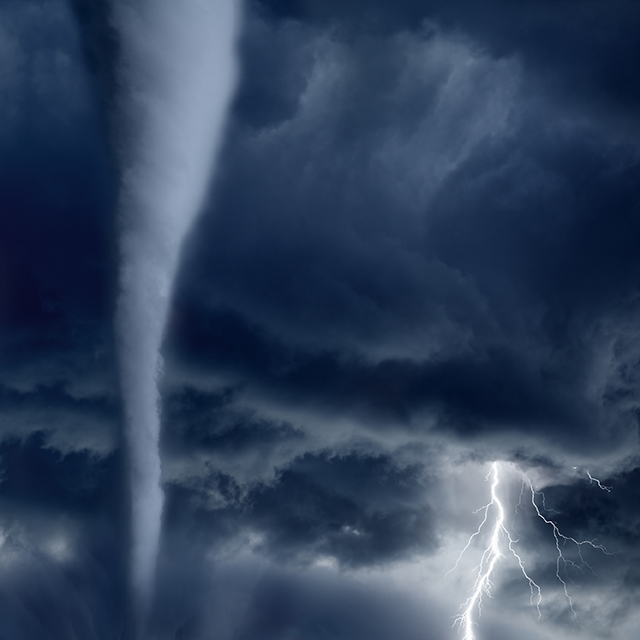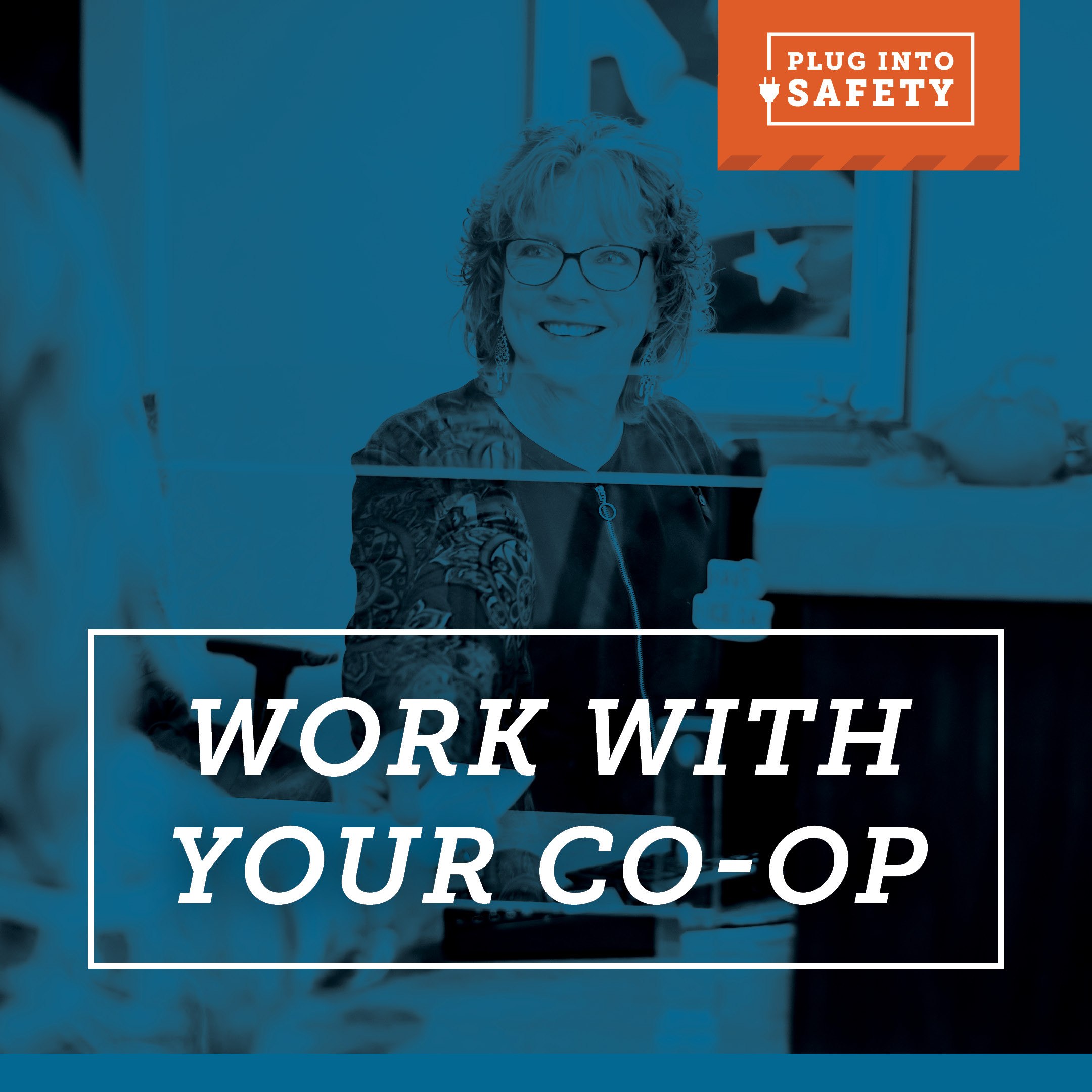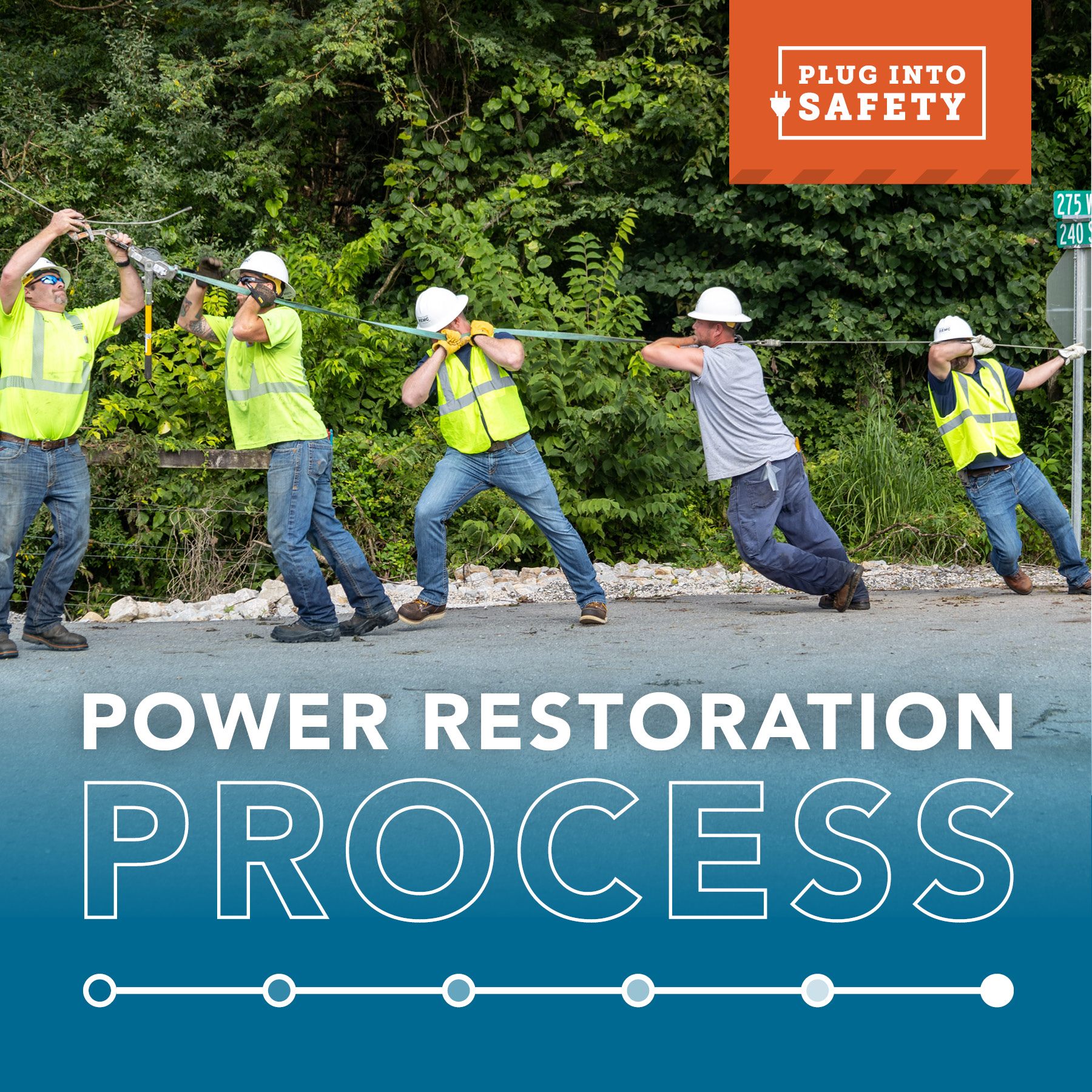
Tornado season is upon us. Do you know what to do if you’re in the path of a tornado?
If you’re inside during a tornado, take shelter in a windowless, interior room; a storm cellar; or the lowest level of the building. Stay away from glass doors and windows to avoid debris from heavy wind.
Crouch down and make yourself as small of a “target” as possible. If you can, get under a piece of sturdy furniture, like a heavy table or desk. Always use your arms to protect your head and neck from injury.
If a tornado hits while you’re in a car, trailer or mobile home, get out immediately and go to the lowest floor of a sturdy nearby building or storm shelter. Cars, trailers and mobile homes can easily be swept away by a tornado or heavy winds. They are not safe places to be.
If you are outside and cannot find shelter,seek low ground or depression and cover your head and neck. (Ditches are likely to be running with water from heavy rain and could be more dangerous than the tornado.) Be aware of possible risks like falling trees or power lines and lightning.
The most dangerous place to be during a tornado is under an overpass. Seeking shelter under an overpass puts you at a higher elevation with no protection from debris and winds. These high wind speeds can also make it hard to drive safely, so in most cases we advise against outrunning a storm. Traffic, debris or other obstacles, and the chance of a storm changing directions, can make it very dangerous to do so.
To prepare for a tornado, always keep a battery-powered radio handy to receive emergency information. Also, to avoid the risk of carbon monoxide poisoning, never use generators or charcoal-burning devices inside your home, basement, garage or camper.
The time after a tornado brings communities together, and many want to help in any way they can. But be careful when entering damaged buildings and stay out of any buildings that smell like gas. Wear sturdy shoes or boots, long sleeves and gloves when handling or walking on or near debris.
If you want to help with the recovery efforts after a disaster, please go through an established organization to volunteer. These areas can be dangerous, and those organizations will know how to organize and respond in a safe manner.
Never touch downed power lines or objects in contact with them. They could still be live with electricity and touching them could be fatal. Instead, immediately report any downed lines to your local electric cooperative.
Top 4 signs of a tornado — and how to prepare for what to do next!
Signs of a tornado:
- Dark green sky
- Rotating wall cloud
- Large hail
- Loud roar, like a freight train
What to do next:
- Stay tuned to local radio and TV stations.
- Watch the weather and be prepared to take shelter immediately.
- Designate a spot in your home as a shelter, and practice with everyone in your family.
- Make sure everyone understands the siren warning system in the area.
- Mark where first-aid kit and fire extinguishers are located.
Tornadoes: Fact vs. Myth
“When a tornado warning is issued, you should open all the windows in the house.”MYTH
If a tornado is going to pass close enough to do damage to your house, there’s nothing you can do to minimize it, and making the effort is only risking your life.
“Tornadoes do not hit big cities.”MYTH
Tornadoes hit large metropolitan areas with a relatively high frequency. Tornadoes are not diverted by any structure or terrain.
“Tornadoes have picked up objects and people and set them down without damage or injury.”FACT
You should never assume you’re going to walk away from a tornado if you don’t seek shelter.
“Tornadoes won’t cross over rivers or other bodies of water.”MYTH
It doesn’t matter what’s in front of it – a tornado will pass over or through it.
“The best place to be during a tornado is the southwest corner of your basement.”MYTH
This myth is derived from the idea that most tornadoes will approach from the southwest. The most important thing to remember is to stay as far away from windows as possible.
“If you’re in your car on the road when a tornado is approaching, hiding under an overpass is your safest bet.” MYTH
Taking shelter under an overpass is one of the most dangerous things you can do when a tornado is approaching.The tornado’s winds could potentially interact with the bridge structure.
Source: Weather Underground





